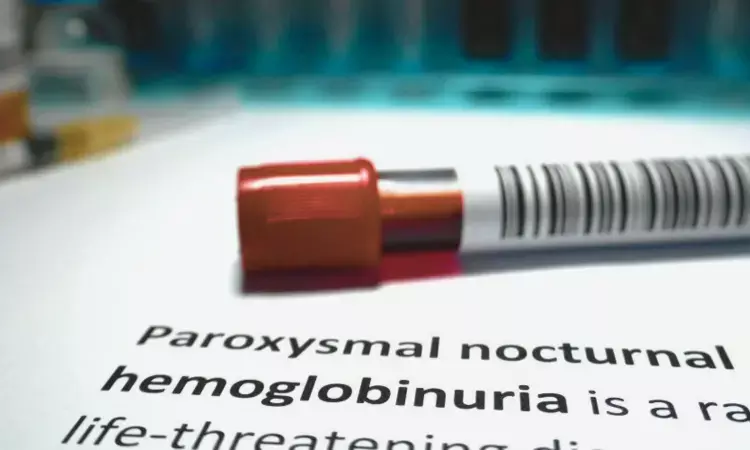- Home
- Medical news & Guidelines
- Anesthesiology
- Cardiology and CTVS
- Critical Care
- Dentistry
- Dermatology
- Diabetes and Endocrinology
- ENT
- Gastroenterology
- Medicine
- Nephrology
- Neurology
- Obstretics-Gynaecology
- Oncology
- Ophthalmology
- Orthopaedics
- Pediatrics-Neonatology
- Psychiatry
- Pulmonology
- Radiology
- Surgery
- Urology
- Laboratory Medicine
- Diet
- Nursing
- Paramedical
- Physiotherapy
- Health news
- Fact Check
- Bone Health Fact Check
- Brain Health Fact Check
- Cancer Related Fact Check
- Child Care Fact Check
- Dental and oral health fact check
- Diabetes and metabolic health fact check
- Diet and Nutrition Fact Check
- Eye and ENT Care Fact Check
- Fitness fact check
- Gut health fact check
- Heart health fact check
- Kidney health fact check
- Medical education fact check
- Men's health fact check
- Respiratory fact check
- Skin and hair care fact check
- Vaccine and Immunization fact check
- Women's health fact check
- AYUSH
- State News
- Andaman and Nicobar Islands
- Andhra Pradesh
- Arunachal Pradesh
- Assam
- Bihar
- Chandigarh
- Chattisgarh
- Dadra and Nagar Haveli
- Daman and Diu
- Delhi
- Goa
- Gujarat
- Haryana
- Himachal Pradesh
- Jammu & Kashmir
- Jharkhand
- Karnataka
- Kerala
- Ladakh
- Lakshadweep
- Madhya Pradesh
- Maharashtra
- Manipur
- Meghalaya
- Mizoram
- Nagaland
- Odisha
- Puducherry
- Punjab
- Rajasthan
- Sikkim
- Tamil Nadu
- Telangana
- Tripura
- Uttar Pradesh
- Uttrakhand
- West Bengal
- Medical Education
- Industry
Rare Blood Disorder Leads to Severe Kidney Damage in Untreated PNH: Case Report

Australia: A case report published in BMC Nephrology by Seethalakshmi Viswanathan and colleagues from the Tissue Pathology & Diagnostic Oncology, Institute of Clinical Pathology and Medical Research, Westmead Hospital, Australia, has highlighted the severe renal consequences of untreated paroxysmal nocturnal haemoglobinuria (PNH) in a patient with a history of aplastic anaemia (AA). The report underlines the importance of vigilant follow-up and timely intervention in patients with PNH clones to prevent long-term complications such as chronic renal haemosiderosis.
PNH is a rare, life-threatening disorder marked by intravascular haemolysis, anaemia, and thrombosis. Kidney involvement often results from chronic haemosiderin deposition or microvascular thrombosis. In this case, the authors describe a 74-year-old woman previously treated for AA who later developed an expanding PNH clone but did not receive complement inhibitor therapy before being lost to follow-up.
The patient was admitted in April 2024 with fever, malaise, severe haemolytic anaemia, and acute kidney injury in the setting of Escherichia coli sepsis. Laboratory workup confirmed renal dysfunction, elevated serum creatinine, and a large PNH clone involving over 80% of neutrophils and monocytes. Despite stabilisation of haemolysis after infection control and red blood cell transfusions, her kidney function continued to deteriorate.
A renal biopsy performed on day 33 revealed extensive brown pigment deposits in most proximal tubules, confirmed as haemosiderin on Perls’ Prussian blue staining, along with severe acute tubular injury. Chronic damage, including interstitial fibrosis, tubular atrophy, and inflammation, was also noted. The findings supported a diagnosis of acute tubular injury on a background of chronic kidney disease, largely attributable to ongoing intravascular haemolysis from untreated PNH, with possible contributions from hypertension and diabetes.
Her hospital course was further complicated by multiple cerebral cortical venous thromboses and recurrent E. coli urosepsis. Persistent fevers and elevated inflammatory markers prompted further evaluation, which revealed thoracic aortitis. She was diagnosed with giant cell arteritis (GCA) and responded rapidly to high-dose corticosteroids, with improvement in inflammatory markers, haemoglobin, and renal function.
By discharge, her creatinine had stabilised at 160–170 µmol/L, and she was initiated on ravulizumab, a C5 complement inhibitor, once the risk of sepsis was reduced. Six months later, both her haemolysis and kidney function remained stable.
The authors emphasise that this case illustrates the severe renal complications that can arise from prolonged, uncontrolled haemolysis in PNH, particularly in patients with a prior history of AA. It also underscores the need for regular surveillance in AA survivors for the emergence or progression of PNH clones and the importance of addressing haemolytic triggers promptly. The rare coexistence of PNH with GCA in this patient further highlights the value of comprehensive diagnostic evaluation in complex presentations.
Reference:
Goh, Z.Z., Tang, K., Chau, K. et al. Severe renal haemosiderosis in a patient with untreated paroxysmal nocturnal haemoglobinuria: a case report. BMC Nephrol 26, 435 (2025). https://doi.org/10.1186/s12882-025-04343-5
Dr Kamal Kant Kohli-MBBS, DTCD- a chest specialist with more than 30 years of practice and a flair for writing clinical articles, Dr Kamal Kant Kohli joined Medical Dialogues as a Chief Editor of Medical News. Besides writing articles, as an editor, he proofreads and verifies all the medical content published on Medical Dialogues including those coming from journals, studies,medical conferences,guidelines etc. Email: drkohli@medicaldialogues.in. Contact no. 011-43720751


